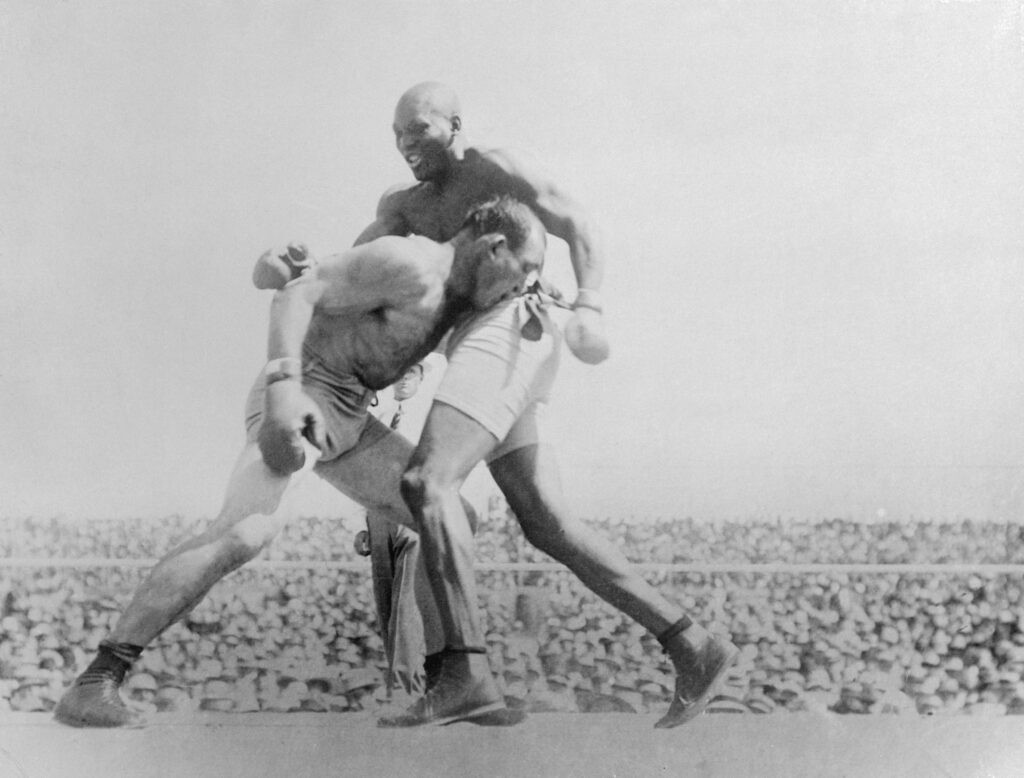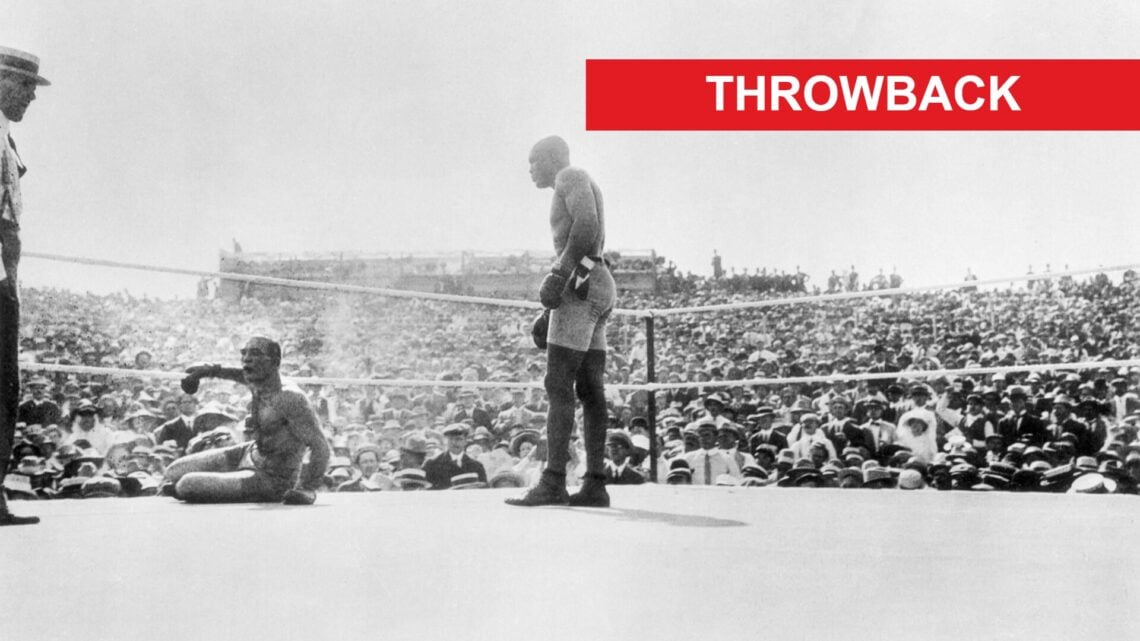115 years ago today, Jack Johnson’s victory over America’s “Great White Hope” caused over 20 people to be killed in riots all across America.
During a time when race relations were at an all-time low in the United States, Jack Johnson stood out in a country that derided his achievements for the color of his skin. He was admired by Muhammad Ali for his boxing ability and his courage in the face of racism.
Johnson had broken the color line by becoming the first black world heavyweight champion in 1908, but the American public’s attitude towards him was negative, to say the least.
His title reign challenged racial norms, and his confidence and wealth outside the ring infuriated bigoted boxing fans, who searched high and low for a man to end his title reign.
Johnson proved that color was not a barrier to success and became one of the greatest heavyweight fighters in boxing history.
However, the country turned to an undefeated former champion to try and end his reign as the top Heavyweight fighter in the United States.
- READ MORE – Muhammad Ali took a $6 million payday for this bizarre crossover fight that left his fans furious

Jim Jeffries was anointed America’s ‘Great White Hope’ to beat Jack Johnson
The man chosen to try and stop Johnson was a former world champion, who was coming out of retirement after six years to take on Johnson.
Jim Jeffries had retired in 1904 after a second-round knockout victory over Jack Munroe. He retired as the undefeated World Heavyweight Champion and was regarded as one of the United States’ finest fighters.
He was chosen in the search for America’s “Great White Hope”, as people were furious that a black man dared best them in the ring due to his own strength and talent.
Jeffries came back into boxing to prove that white men were better than black men at boxing, as was such the backwards thinking that was prevalent at the time.
The bout was dubbed the “Fight of the Century”, and became a huge moment in time for race relations in the United States, as the Heavyweight fighter sought to disprove all those who doubted him due to the color of his skin.
Thankfully, Johnson proved all those people wrong, but the resulting unrest cascaded across the entire nation.
Jack Johnson beat Jim Jeffries before race riots kicked off all across America
Despite the old-fashioned views in America at the time, Johnson proved that the color of a man’s skin had nothing to do with one’s boxing ability.
Nearly 20,000 people crammed into a makeshift arena in Reno, Nevada, to see Jeffries returning to the ring to try and stop Johnson for the first time.
The bout lasted 15 rounds, but it was over by the fourth. An uppercut from Johnson rattled Jeffries, and the Heavyweight champion knew it was just a matter of time until he’d taste victory.
Jeffries’ corner threw in the towel before the end of the 15th round. He had been knocked down twice already, and not wanting to tarnish his record with a KO loss, gave up in his stead to hand Johnson a monumental victory.
The American public did not see it that way, though. Johnson’s victory triggered race riots all across the country, in more than 25 states and 50 cities. Hundreds were injured in the violence, and over 20 people were killed in one of the bleakest days in boxing history.
The aftermath was so destructive that footage of the fight was banned in numerous US states, as people simply could not handle seeing a black boxer vanquish their “Great White Hope” in such impressive fashion.
The term “The Great White Hope” was later used as the title of a play and film covering the life of Jack Johnson, in a delightful reclamation of the phrase that was once used against him.

